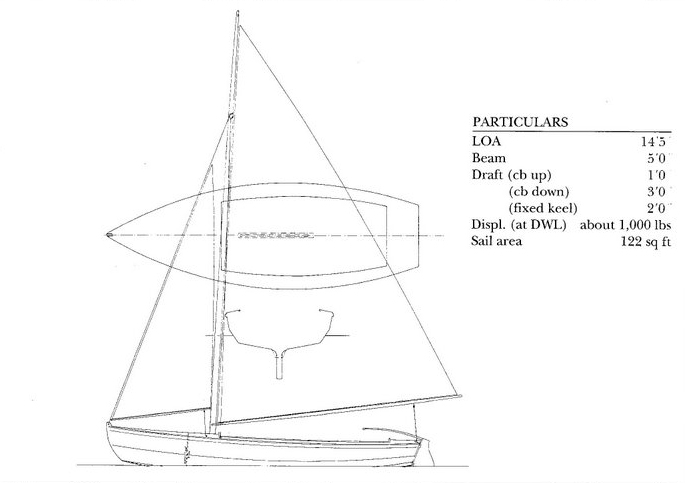Biscayne Bay 14 by N. G. Herreshoff

Originally intended fin. the shoal Florida waters for which the design is named, this 14-footer is offered in two versions: a shallow-draft, keel-and-centerboard combination, or a deep-draft fixed iron keel. The second version is the easier of the two to build, and better to windward, but the original model will float in a mere foot of water, and, of course, be handier to trailer. In addition to the keel options there are some interesting construction features that put this boat a cut above anything like it—but still within reach of the skills of an amateur builder.
The Herreshoffs were noted for strong construction using light scantlings. The Biscayne Bay boat has a double-chivied hull planked with solid wood and tim-bered with steam-bent half-frames (that is, the frames stop short of the keel where they connect with floor tim-bers). This knuckled hull looks better than a single-chined, V-bottomed hull of plywood construction, and behaves more like a round-bottomed boat when heeled.
Beneath the foredeck is a watertight compartment: side decks and cockpit sole accommodate the crew. So there are no scats or hatches to build, and the boat has reserve buoyancy in the unlikely event of a capsize. The rudder profile is unusual, but its construction is not—this shape increases directional stability without exceed-ing the boat’s minimum draft. Because the Herreshoffs preferred to custom cast much of the hardware for their yachts, drawings are sup-plied for this boat’s original fittings—if the builder is so inclined to make or obtain castings. Alternatively, stock hardware can be substituted, as indicated in the plans.
